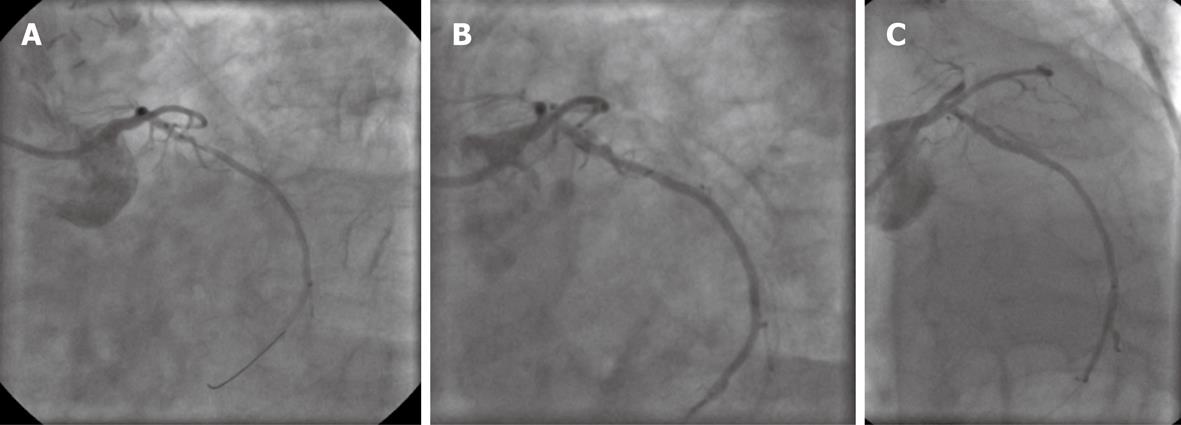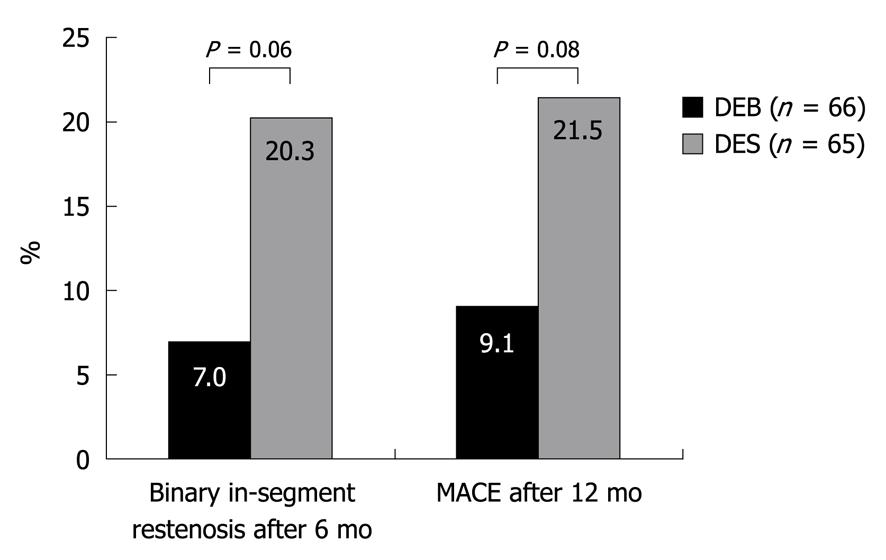Copyright
©2010 Baishideng Publishing Group Co.
World J Cardiol. Sep 26, 2010; 2(9): 257-261
Published online Sep 26, 2010. doi: 10.4330/wjc.v2.i9.257
Published online Sep 26, 2010. doi: 10.4330/wjc.v2.i9.257
Figure 1 Subtotal long-segment in-stent re-restenosis of the right coronary artery treated with drug eluting balloons.
A: Pre-percutaneous coronary intervention; B: After recanalization; C: Angiographic 6-mo follow-up.
Figure 2 Proximal de novo stenosis of the native left circumflex coronary artery treated with “plain old balloon angioplasty” using a drug eluting balloon.
A: Pre-percutaneous coronary intervention (PCI); B: Immediately after PCI; C: Angiographic 6-mo follow-up.
Figure 3 Treatment of in-stent-restenosis using a drug eluting balloon (paclitaxel-releasing balloon) vs a drug-eluting stent (paclitaxel-eluting stent).
Left columns: Rate of binary in-segment restenosis (%) after 6 mo; Right columns: Major adverse cardiac events (MACE, including target lesion revascularization, myocardial infarction, stent thrombosis, or death) (%) after 12 mo[9]. DEB: Drug-eluting balloon; DES: Drug-eluting stents.
Figure 4 Treatment of small vessels (diameter < 2.
8 mm) using a drug eluting balloon (paclitaxel-eluting balloon). Left columns: Rate of binary in-segment restenosis (%) after 6 mo; Right columns: Major adverse cardiac events (MACE) (%) after 12 mo[10]. DEB: Drug-eluting balloon.
- Citation: Joost A, Kurowski V, Radke PW. Drug eluting balloons for the treatment of coronary artery disease: What can we expect? World J Cardiol 2010; 2(9): 257-261
- URL: https://www.wjgnet.com/1949-8462/full/v2/i9/257.htm
- DOI: https://dx.doi.org/10.4330/wjc.v2.i9.257












